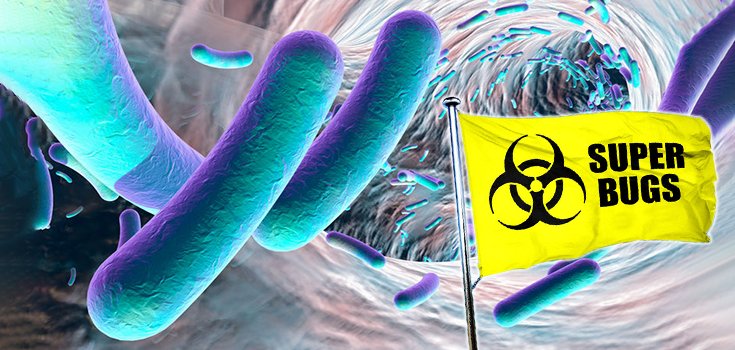The Problem of Antibiotic Resistance is Getting Much Worse

Scientists have detected a disturbing form of antibiotic-resistance on U.S. farms in recent months, but it’s not the type they anticipated, and they don’t know how it wound up there.
Researchers say that they’ve discovered resistance to a class of antibiotics called carbapenems, a last-line of defensive drugs used to treat severe infections. These antibiotics are not intended for agricultural use because they are so vital to human health. In fact, they’re so potent and so valuable that they are usually reserved for patients exhibiting resistance to multiple antibiotics. [1] [2]
The bacteria had been identified among European and Asian livestock, but there was no sign of the problem in the U.S. until now. [3]
The Unsettling Discovery
Thomas Wittum, chair of veterinary preventive medicine at Ohio State University, and a team of colleagues went to a pig farm where they swabbed floors and walls over a 5-month period, collecting environmental and fecal samples. They discovered the presence of a specific carbapenem-resistant gene called blaIMP-27 growing in their petri dishes. [3]
Wittum explains that carbapenem antibiotics are illegal for farm use; even if they weren’t, they’d be too expensive anyway.
“How the [resistant bacteria] got onto the farm we really don’t know. But probably it was introduced from the outside from movements of wildlife, people, equipment, etc.” [1]
He says it’s possible that other legal antibiotics used on the farm could be helping the bacteria to grow and spread, but more research is necessary.
None of the bacteria was detected in any of the pigs, but Wittum says he and the study’s co-authors have detected it in both sows and piglets.
“We found no evidence that these organisms were entering the food supply, but that is the concern: that it could happen on this or other farms,” he says. “We need more research to really understand that risk.”
He goes on to say:
“For now, we think that this is a rare and unusual occurrence. We hope that we have caught it early enough to stop it from spreading.
[But] the risk to the public is that these are food animals that will someday enter the food supply as fresh pork products.
While we didn’t find any evidence that that has occurred on this particular farm, it is a potential concern. We want to be sure that multidrug-resistant bacteria like these are never present in food, and one way to do that is to be sure that they are not introduced onto our farms.” [3]

In the spring, British Chancellor George Osborne warned that antibiotic resistance could kill up to 10 million people a year by 2050, making it a bigger threat than cancer. That’s 1 person every 3 seconds.
Wittum says that this particular strain of antimicrobial resistance “may be related to antibiotics used to treat sick pigs, for the same reason that resistant bacteria like these are present in human hospitals because of the way we treat sick people with antibiotics.”
In other words, they’ve been overused.
He adds:
“We can’t just stop treating the sick pigs with antibiotics because of the negative impact that would have on animal welfare. But it might be possible for the farm to use antibiotics in different ways to stop the spread of this particular strain.”
But treating them and preventing them from becoming sick are 2 different things. Dr. David Wallinga of the Natural Resources Defense Council says the discovery may mean we’ve passed the point of no return.
Read: 84-Page Report Outlines 9 Ways to Beat Antibiotic Resistance
“The last terrible shoe may have just dropped when it comes to drug-resistant infections. This is just one more warning that doctors may soon have nothing left in their toolkit to save patients when these bugs strike.
Our overuse of antibiotics in livestock is creating reservoirs for the spread of resistance – and this study strongly suggests resistance to carbapenems is no exception. To save our miracle drugs, we have got to stop wasting them on animals that aren’t sick.” [2]
Sources:
[1] Time
[2] Consumerist
[3] HealthDay
CDC
